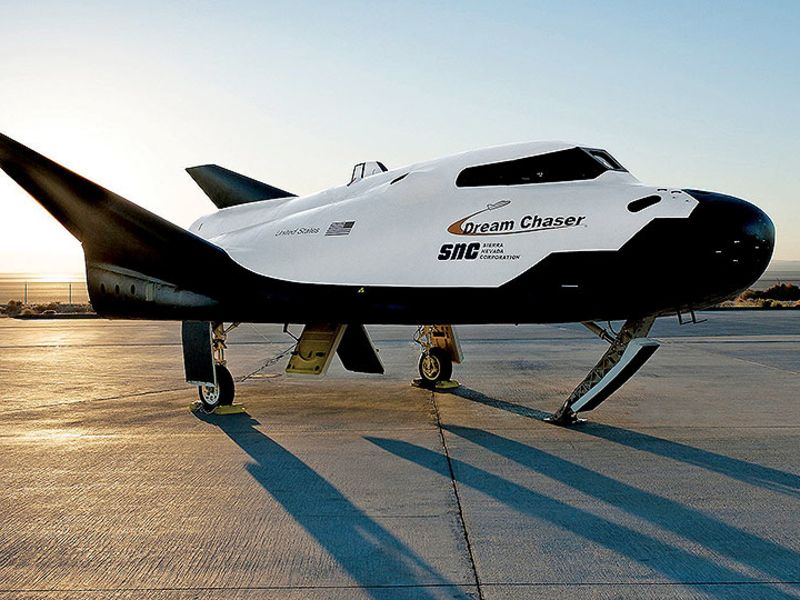
Since General Motors first showcased the “Boss” 14 years ago at CES, the annual technology showcase has become a prominent venue for displaying the latest in autonomous-vehicle technology.
This year’s most intriguing entrant won’t navigate rocky desert terrain as Boss, an autonomous Chevrolet Tahoe, did as the winner of a Defense Department competition that served as a formative event for the automated industry. In fact, it won’t navigate any terrain at all.
Sierra Space Corp. plans to unveil a full-scale replica of its Dream Chaser spacecraft during the show. The real thing is scheduled to launch late this year or perhaps in early 2023, according to Janet Kavandi, president of the company, on a cargo-carrying mission to the International Space Station.
When it departs, it will be under autonomous control with no humans aboard.
“You may not necessarily have to have a pilot to have a Dream Chaser, but we will allow crew interfaces to the vehicle,” Kavandi said in December. “It’s just not the traditional pilot role we’ve thought of in the past. This vehicle is smart enough to do it by itself.”
During CES, Sierra Space’s mission is to headline the event’s fresh foray into space technology.
While there have been space-related companies at the show in the past, this year, event organizers added a distinct space-technology subset to the conference in an effort to capture the burgeoning innovation in the global space economy. The industry was valued at $447 billion in 2020, according to nonprofit advocacy organization Space Foundation.
“We try to go where we think the world may be going and we always have new things at the show,” said Gary Shapiro, CEO of the Consumer Technology Association, which runs CES. “We want people to go to see us focus on the future. And there’s no question space is the future.”
Broadly, Elon Musk’s SpaceX, Jeff Bezos’ Blue Origin and Richard Branson’s Virgin Galactic have sparked a surge of interest in the space sector. Sierra Space is one of several companies on the space front, including some that work on weather forecasting, satellite systems and long-distance communications, slated to participate in CES.
Companies with one foot in automotive tech and the other in lower-earth orbit scheduled to take part in CES include:
- Global supplier Bosch, which has previously detailed at CES its work on a lunchbox-sized device that captures ambient noise and identifies potential maintenance needs for a robot capable of navigating through the International Space Station. This year, Bosch will go into further detail, including about earthbound applications.
- Thermal-management company Kulr Technology Group, which has developed technology used by the likes of NASA, Lockheed Martin and Andretti Autosport. The group will discuss battery-safety innovations and a new partnership with Volta Energy Solutions to develop energy-storage products.
- AVL, the automotive simulation and testing company, is expected to showcase its work with Northrop Grumman. The latter said in November that it is leading the design of NASA’s next Lunar Terrain Vehicle, integrating systems from the likes of both AVL and Michelin, among others.
AVL and Northrop plan to offer a virtual reality-enabled drive across the moon’s surface as part of its demonstration. Perhaps just as immersive, Sierra Space intends to show a model of the Orbital Reef, a low-earth-orbit space station it is co-designing with Blue Origin that is something of a combination commercial lab and office park.
“The public focuses on the three billionaires and their different ways of getting to space, but there’s a lot of other things that go into space technology we’ll need in the future,” Shapiro said. “So there’s a lot of things there.”